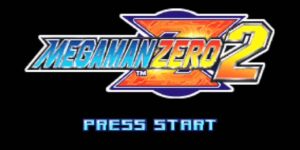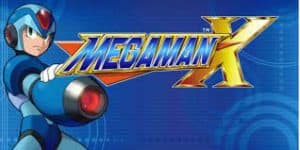Since his debut in 1987, Mega Man has become one of Capcom’s most enduring and iconic franchises. Known as Rockman in Japan, the series has captivated players with its challenging gameplay, memorable music, and evolving narratives. Over the decades, Mega Man has expanded into multiple sub-series, each exploring different facets of its universe.
Mega Man And Its Worth
The Classic Series
The original Mega Man game introduced players to the titular blue robot, created by Dr. Light to thwart the nefarious Dr. Wily. This series, spanning from Mega Man (1987) to Mega Man 11 (2018), established the core mechanics: defeating Robot Masters, acquiring their weapons, and platforming challenges. Its non-linear level selection and rock-paper-scissors weapon system were groundbreaking at the time.
A New Era
In 1993, Mega Man X launched on the Super Nintendo, introducing a darker, more mature storyline set a century after the original series. Players took on the role of X, a new generation robot with free will, battling against Mavericks led by Sigma. The series, spanning eight main titles, added mechanics like wall-jumping and armor upgrades, enhancing the action-platforming experience.
Zero, ZX, and Legends: Expanding the Universe

The Mega Man Zero series (2002-2005) continued the narrative, focusing on Zero’s battles against oppressive regimes. It introduced a more story-driven approach and increased difficulty. Following this, the Mega Man ZX series (2006-2007) combined elements from previous games with Metroidvania-style exploration. Meanwhile, the Mega Man Legends series (1997-2000) ventured into 3D action-adventure territory, offering a fresh perspective on the franchise’s lore.
Battle Network and Star Force: Alternate Realities
Departing from the traditional action-platforming, the Mega Man Battle Network series (2001-2006) introduced a real-time tactical RPG set in a world where humans interact with programs called NetNavis. This series emphasized strategic combat and storytelling. Its successor, the Mega Man Star Force series (2006-2008), continued in a similar vein, exploring themes of connectivity and digital evolution.
The Ultimate Maverick Hunter Showdown
In the expansive universe of Capcom’s Mega Man series, few debates ignite as much passion as the one between Mega Man X and Zero. Both characters have carved their legacies as formidable Maverick Hunters, each with distinct abilities, personalities, and fan followings. This article delves into their feats, gameplay mechanics, and the community’s sentiments to determine who truly stands atop the Maverick Hunter hierarchy.
Origins and Characterization
Mega Man X, often referred to simply as X, was created by Dr. Light with the vision of a robot possessing free will and a strong moral compass. This design aimed to bridge the gap between humans and robots, promoting coexistence. X’s journey is marked by his internal struggles, questioning the morality of his actions and the nature of his existence. His contemplative nature adds depth to his character, making him one of gaming’s more introspective heroes.
Zero, on the other hand, was the final creation of the infamous Dr. Wily. Originally designed as a weapon of destruction, Zero’s early days were marred by violence until he was subdued and reprogrammed to fight for good. His stoic demeanor, combined with a mysterious past, paints him as the archetypal lone warrior. Over time, Zero’s character evolved, showcasing loyalty, sacrifice, and a relentless drive to protect humanity.
Combat Capabilities and Feats

Mega Man X:
• Versatility: X’s primary weapon, the X-Buster, allows him to engage enemies from a distance. As he defeats Mavericks, he acquires their weapons, granting him a diverse arsenal to tackle various challenges.
• Armor Upgrades: Throughout the series, X gains access to multiple armor sets, enhancing his abilities. Notable among these is the Ultimate Armor, which offers increased mobility, defense, and the devastating Nova Strike attack.
• Strategic Combat: X’s gameplay emphasizes adaptability, allowing players to approach situations with a mix of ranged attacks and strategic weapon choices.
Zero:
• Melee Mastery: Zero’s signature weapon, the Z-Saber, enables swift and powerful close-combat attacks. His combat style is aggressive, focusing on quick movements and precision strikes.
• Special Techniques: Instead of acquiring weapons from defeated Mavericks, Zero learns new techniques, such as the Ryuenjin (flaming uppercut) and the Hyouretsuzan (ice downward stab), adding depth to his combat repertoire.
• Alternate Forms: Zero can access powerful transformations like Black Zero, which boosts his attack power and speed, and Absolute Zero, granting flight and enhanced melee capabilities.
Fan Perspectives
The Mega Man community remains divided in their preferences between X and Zero. On platforms like Reddit, discussions often highlight the strengths and appeal of both characters.
• Zero’s Appeal: Many fans are drawn to Zero’s design and combat style. Comments like “Zero is the coolest, that is all” and “I love me some red Sword Swingin’ blonde robot man” reflect his popularity.
• X’s Resonance: Others resonate more with X’s character depth and gameplay. One user noted, “I always prefer X over Zero,” emphasizing a connection to X’s journey and abilities.
These varied opinions showcase the rich character development and gameplay mechanics that both X and Zero bring to the series.
A Tale of Two Heroes
Determining who stands superior between Mega Man X and Zero isn’t straightforward. X embodies the thoughtful hero, grappling with the weight of his responsibilities, while Zero represents unwavering determination and combat prowess. Their contrasting styles and narratives enrich the Mega Man universe, offering players diverse experiences.
Ultimately, the choice between X and Zero boils down to personal preference. Whether you align with X’s strategic versatility or Zero’s relentless offense, both characters have cemented their places as iconic figures in gaming history.
Legacy and Influence
Mega Man’s influence extends beyond games. The character has appeared in various media, including animated series like Mega Man NT Warrior and Mega Man: Fully Charged. The franchise’s music, particularly from the NES era, is celebrated for its composition and has been performed in concerts worldwide. As of March 2025, the series has sold over 43 million units globally, cementing its status as a cornerstone of gaming history.
Remember to visit Total Apex Gaming for more game-related news and content, and remember to keep those fingers moving.
More must-reads:
- Falcons tight end hits snag ahead of pivotal 2025 season
- Mariners will retire Ichiro’s No. 51 again for a different player
- The 'MLB Live-Ball Era strikeout leaders' quiz
Breaking News
Trending News
Customize Your Newsletter
 +
+
Get the latest news and rumors, customized to your favorite sports and teams. Emailed daily. Always free!








